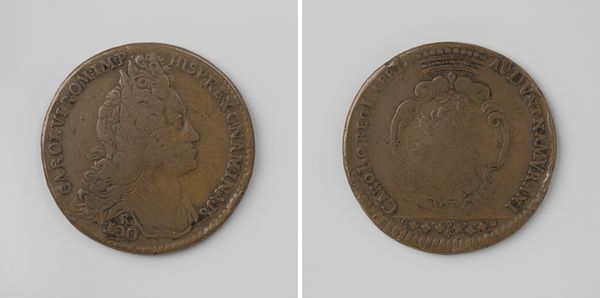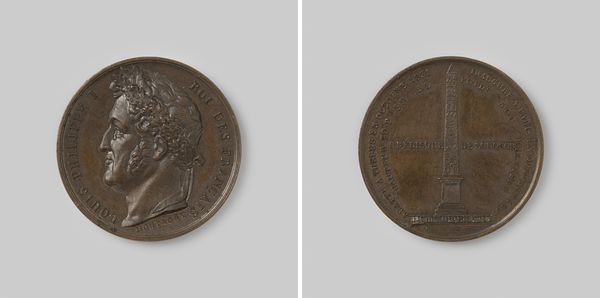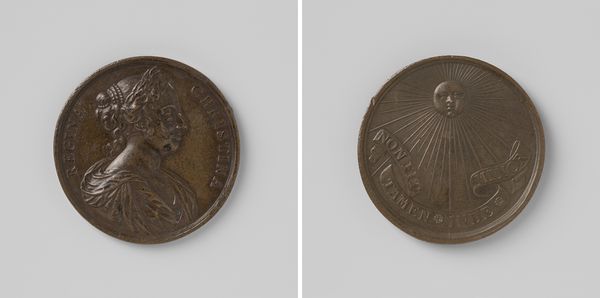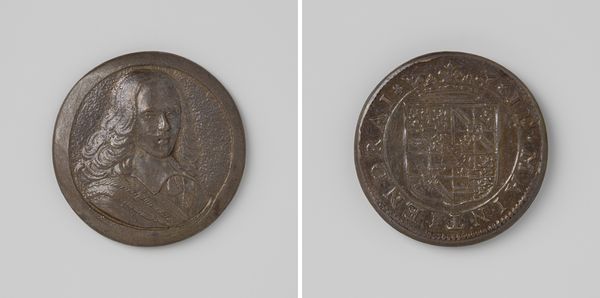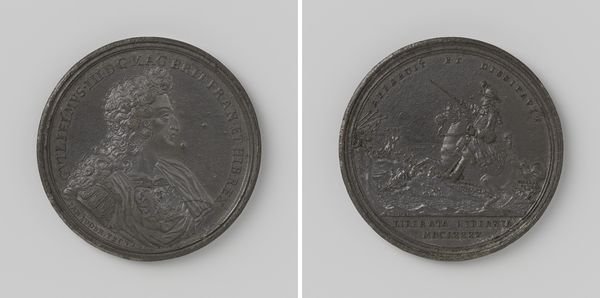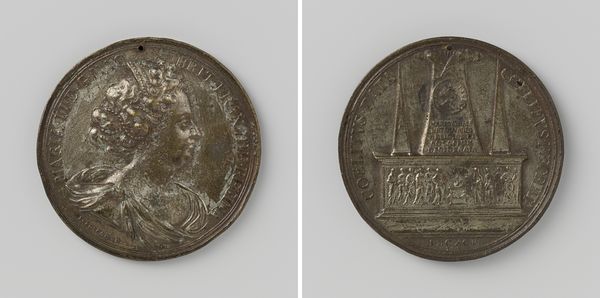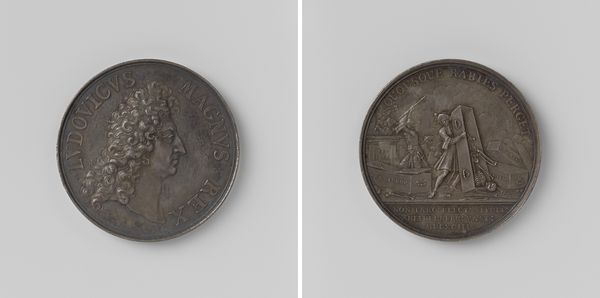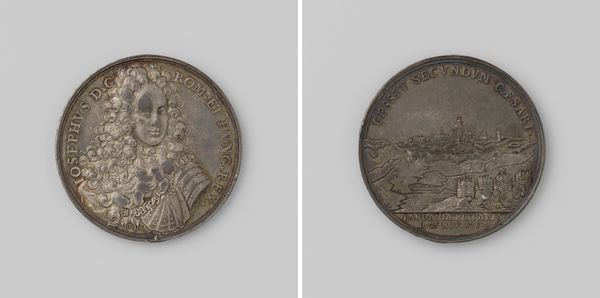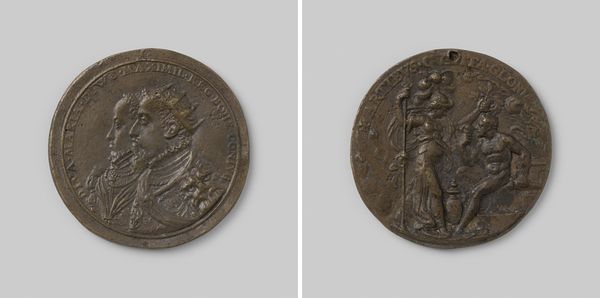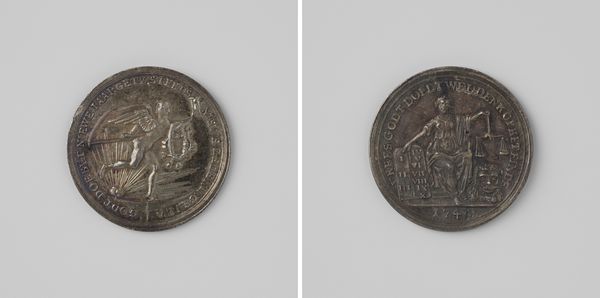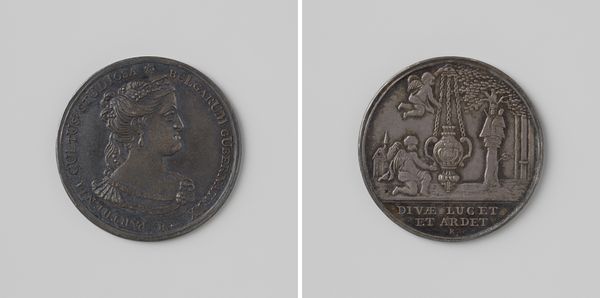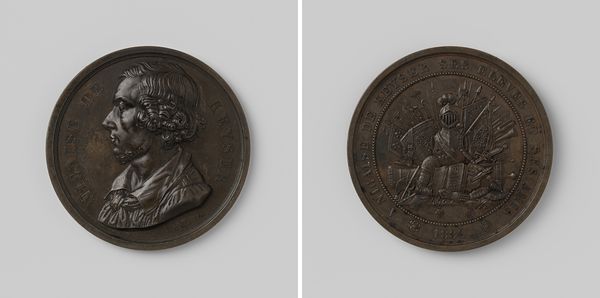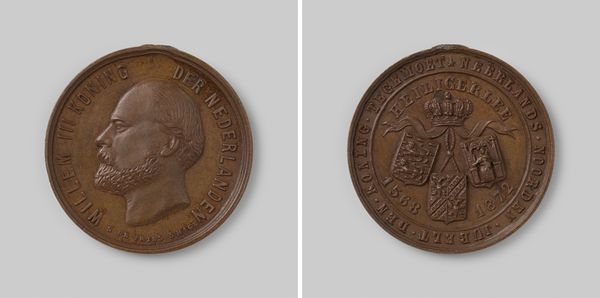
metal, bronze, sculpture
#
portrait
#
medieval
#
metal
#
sculpture
#
bronze
#
sculpture
#
ceramic
Dimensions: diameter 3.7 cm, weight 15.70 gr
Copyright: Rijks Museum: Open Domain
Editor: This is "Onthoofding van Jacobus, hertog van Monmouth," or "The Beheading of James, Duke of Monmouth," created in 1685. It’s a small bronze or metal sculpture in the style of a coin or medallion. It seems incredibly detailed for its size. What stands out to you in this piece? Curator: Immediately, I’m drawn to the iconography of power and rebellion that this object embodies. Here, we have a commemorative object, likely commissioned to solidify a very particular narrative around the execution of the Duke. Notice how the classical portrait is juxtaposed with the brutal image of beheading, forcing us to confront the human cost of political struggle. The symbolism is rich – what do you make of the inclusion of what appears to be a lion? Editor: The lion looks… submissive? Perhaps a symbol of the Duke’s defeat? Curator: Precisely! Consider the socio-political climate of the time. Monmouth's rebellion challenged the authority of King James II. This medal attempts to cast Monmouth not as a wronged individual, but as a threat to stability, successfully defeated. This narrative also reinforces existing hierarchies of gender and class. In whose interests do you think narratives like this circulate? Editor: Well, definitely those in power… King James, and probably the aristocracy supporting him. I suppose even seemingly simple commemorative art like this becomes a powerful tool. Curator: Absolutely. Even the act of creating and distributing such medals can be viewed as a form of propaganda. These objects were intentionally designed to shape public perception and cement a particular political reality. Consider the material – metal, designed to last. It sends a message about the supposed permanence of the victory and the finality of Monmouth's fate. Editor: I never considered a medal as such a complex historical and political statement. It's a stark reminder that even the smallest artwork can hold profound ideological weight. Curator: Indeed. It invites us to question whose stories are being told, and more importantly, whose stories are being deliberately silenced.
Comments
No comments
Be the first to comment and join the conversation on the ultimate creative platform.
